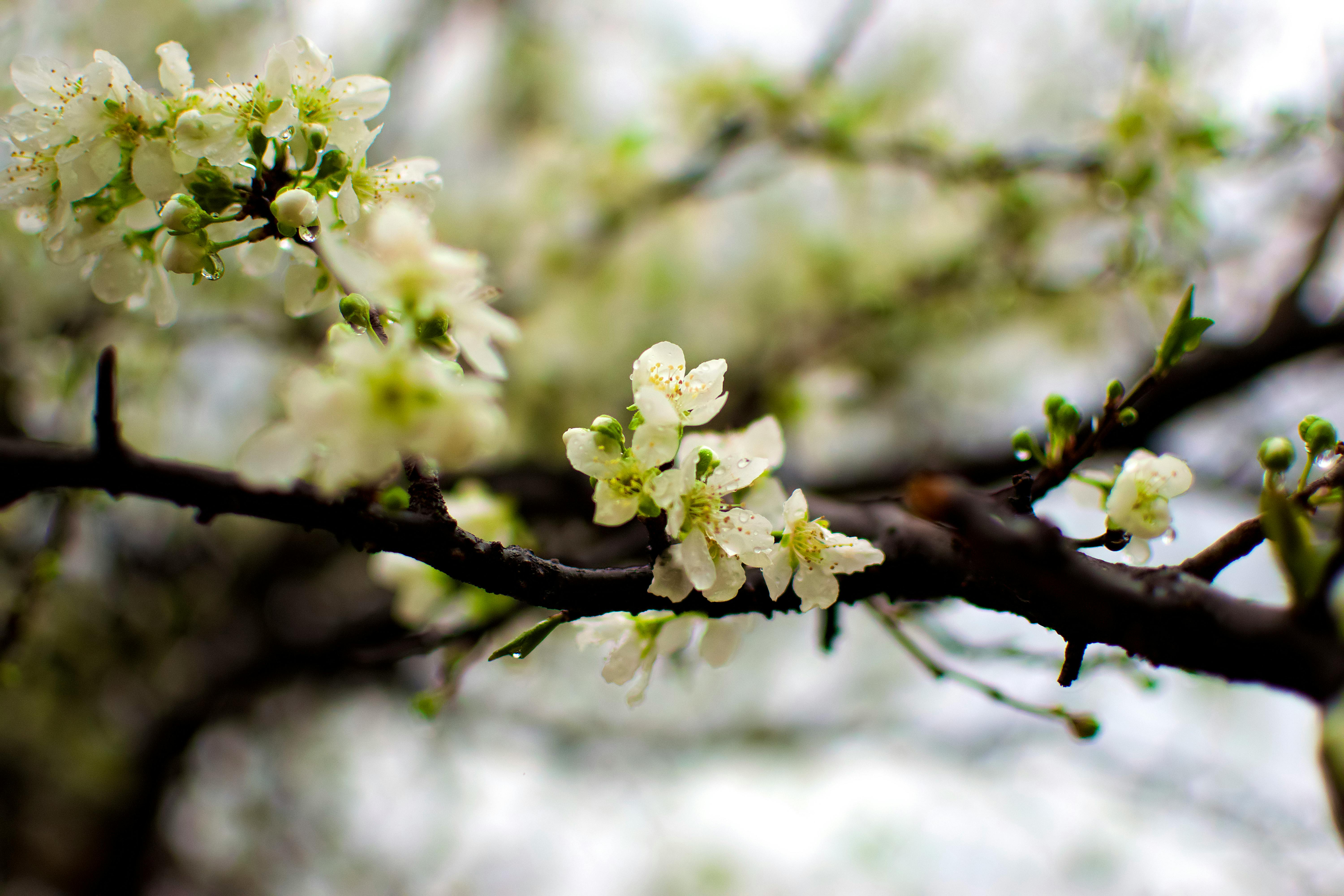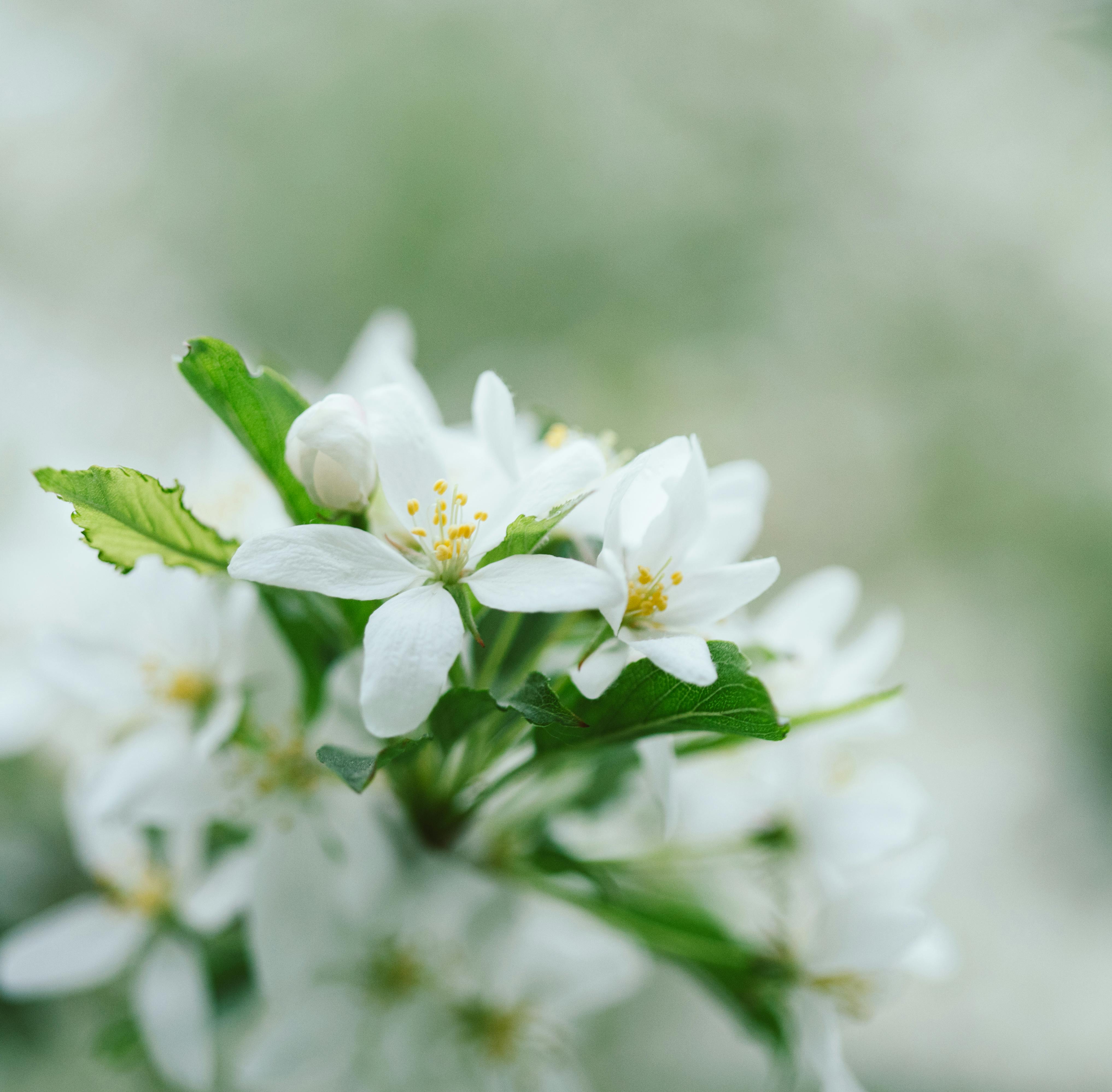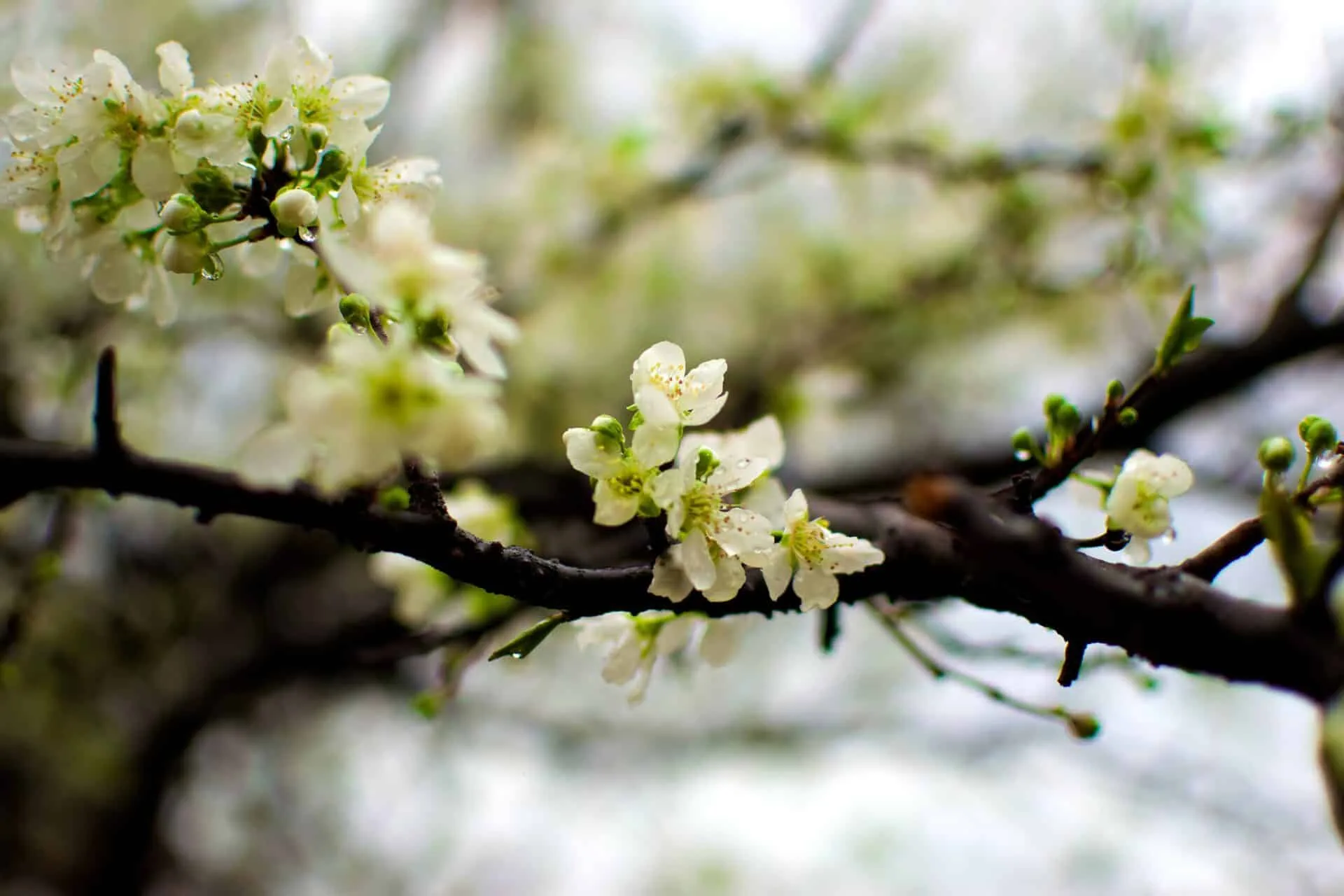Fruit trees are an important part of many gardens, providing a source of delicious fruits for many months of the year. One of the most exciting times for a fruit tree is when it starts to bloom, as this signals that the tree is beginning to produce its fruit. But when do fruit trees bloom? This article will explore the blooming times of different types of fruit trees and how to know when your own tree will start to produce its bounty.The exact answer to the question “When do different fruit trees bloom?” is that it depends on the type of fruit tree. Some fruit trees will bloom in late winter or early spring, while other types may not bloom until late spring or early summer.
Apple Tree Blooming Season
The blooming season of apple trees is a beautiful time of the year for many gardeners and orchard owners. Apple trees produce beautiful white and pink blossoms that add a splash of color to any landscape. The blooming season usually begins in late March or early April and can last up to six weeks, depending on the variety of apple tree. During the blooming season, bees are drawn to the flowers, which helps with pollination. This is an essential part of the growth cycle for apple trees, as it leads to fruit production.
The blooming season also triggers the growth of leaves on the apple tree branches. This is an exciting time for gardeners and orchard owners as they get their first glimpse of foliage on the tree after a long winter. As temperatures continue to warm throughout spring, new leaves will start to appear in greater abundance, providing much-needed shade for other plants in the area.
After the leaves have fully grown in, gardeners and orchard owners can begin to look forward to fruit production around late summer or early fall. By this time, bees have done their job and pollinated all of the flowers, so now it’s just a waiting game until harvest time! The amount of fruit produced during this period depends largely on factors such as climate conditions, soil fertility and water availability during bloom time. With proper care and attention, however, most apple trees will have no trouble producing plenty of delicious apples come harvest time!
In conclusion, the blooming season of apple trees is a very important part of their growth cycle that should not be overlooked by gardeners and orchard owners alike. This magical time brings with it beautiful blossoms that attract bees for pollination purposes as well as lush leaves that provide much needed shade for other plants in the area. With some luck and great care taken throughout this period, you should be able to look forward to an abundant harvest come autumn!
Peach Tree Blooming Season
Peach trees are one of the most popular fruit trees and they bloom in late spring or early summer. The blooming season varies depending on the region, but typically starts in April and may last until June. During this time, the trees produce beautiful white and pink blossoms that are a sight to behold.
Peach trees need full sun and well-drained soil in order to thrive. They should be planted in an area that gets at least six hours of direct sunlight each day. The soil should be kept moist but not wet, as too much water can cause root rot or other diseases. Fertilizing the tree once a year with a balanced fertilizer will help keep it healthy and productive.
Pruning is also important for peach trees during their blooming season. Removing dead or diseased branches will help encourage healthy growth and increase fruit production. Pruning should be done in late winter or early spring before new growth begins. It is also important to thin out overcrowded branches to ensure that each individual branch gets enough sunlight and air circulation for optimal growth.
Harvesting peaches usually occurs when they are fully ripe, which can range from late summer to early fall depending on the variety of peach tree and the climate where it is grown. Ripe peaches should be picked carefully so as not to damage the branch or other nearby fruit on the tree. Once picked, peaches should be eaten or stored right away as they are highly perishable and can quickly spoil if not handled properly.
Overall, taking proper care of your peach tree during its blooming season is essential for ensuring a good harvest later in the year. With proper pruning, fertilizing, watering, and harvesting practices, you can enjoy delicious homegrown peaches all summer long!
Cherry Tree Blooming Season
Cherry tree blooming season is a special time of year when the beautiful cherry blossoms can be seen in full bloom around the world. The cherry blossom season typically begins in late March to early April, depending on the region. In the northern hemisphere, Japan is one of the best places to see cherry blossoms in full bloom. The peak season for cherry tree blooming in Japan is usually around mid-April.
In the United States, cherry tree blooming season occurs later than in Japan due to its location in a different climate zone. Cherry tree blooming usually starts in late March and reaches its peak in April or early May, depending on the region. Cherry blossom festivals are often held during this time of year to celebrate the beauty of these flowers.
The beauty of cherry blossoms lies not only in their delicate petals but also their short life span; they typically only last for a few days before they wither and fall away. This makes it all the more important for people to take advantage of this brief period of time and enjoy their breathtaking beauty while it lasts.
Cherry trees are an important symbol of hope and renewal, which makes them an especially wonderful sight during springtime when nature is coming out of its winter slumber. Whether you’re able to witness these beautiful blooms firsthand or just admire them from afar, it’s easy to appreciate how special these flowers truly are and why they have come to represent so much more than just a simple seasonal change.
Pear Tree Blooming Season
The blooming season for pear trees is typically from early spring to late summer, although this can vary depending on the region and species of the tree. In most areas, the peak of blooming season occurs in April and May. During this time, white or pinkish flowers will appear on the tree’s branches. During this period, each flower will last for three to four days before falling off the branch.
The fruit-bearing period of pear trees usually follows the blooming season. The harvest season for pears will vary depending on species and region, but generally it begins in late summer and runs through autumn. The pear fruits will ripen slowly over a few weeks until they are ready to be harvested.
It is important to note that different varieties of pear trees may have different bloom and harvest seasons. For example, some varieties may bloom earlier or later than others or have an extended harvest season. It is also important that trees are pruned regularly and that they receive adequate sunlight throughout the growing season in order to ensure a successful bloom and harvest.
In short, the blooming season for pear trees typically occurs from early spring through late summer, with peak blooming often occurring in April and May. The harvest season typically follows shortly thereafter, usually beginning in late summer and running through autumn until all fruits have been harvested. Different varieties of pears may have different bloom and harvest seasons as well as other pruning needs that must be met in order for them to thrive throughout their life cycle.

Prunus Mume Blooming Season
The Prunus mume, or Japanese apricot, is a deciduous tree that is native to China. It is also known as the Chinese plum or Japanese flowering apricot. The tree produces fragrant flowers in the late winter and early spring before the leaves appear. The blossoms can range in colour from white to pink and red, and may even be purple or yellow. The fruits of the Prunus mume are edible and have a sweet taste, similar to a plum or peach. In some parts of Japan, the fruit is pickled as a delicacy.
The Prunus mume blooms in late winter and early spring, usually between January and March depending on where it is located. It typically blooms before other trees in its area due to its hardiness. In milder climates, it may bloom as early as December or January, while in colder climates it may not bloom until later in March or April.
The blooming season for Prunus mume can be extended slightly if it is grown in an area with milder temperatures. This can be accomplished by providing extra protection from cold weather such as during a hard frost. Additionally, planting it near buildings that provide warm air can also help extend its blooming season slightly by providing additional warmth when temperatures drop below freezing at night. It can also be kept inside during cold weather if necessary to protect it from extreme temperatures that might damage its delicate blooms.
The Prunus mume tree is an attractive ornamental tree that adds colour and beauty to gardens throughout the year with its fragrant flowers and delicious fruits. Its blooming season typically begins in late winter or early spring, adding beauty to gardens when there are few other plants flowering.
Citrus Tree Blooming Season
The blooming season of citrus trees is one of the most beautiful times of the year. The flowering of citrus trees is not only aesthetically pleasing but also signals a time of great potential for citrus fruit production. Citrus trees typically bloom in the early spring, after the cold winter months have passed. They will continue to bloom until late summer, when temperatures become too hot and dry for them to sustain their blooms.
When a citrus tree begins to bloom, it will produce small white or yellowish flowers that can be seen from a distance. These flowers are incredibly fragrant and will draw pollinators from all around to come and enjoy their sweet aroma. Once pollination has occurred, the flowers will wither away and eventually drop off, leaving behind small green fruits that will gradually ripen over time as temperatures become warmer.
The duration of the blooming season can vary depending on a variety of factors including climate, geography, and species. In order to ensure that your citrus tree produces a good harvest each year, it is important to maintain proper care throughout the growing season. This includes making sure your tree receives adequate water and sunlight as well as providing it with supplemental nutrients such as compost or fertilizer during its flowering period.
Overall, the blooming season of citrus trees is one of the most exciting times for growers and gardeners alike. Not only do these fragrant blooms fill our gardens with beauty but they also provide us with delicious citrus fruits all summer long!
Avocado Tree Blooming Season
Avocado trees have a blooming season that typically occurs twice a year, in the spring and early summer. During this time, the tree will flower and produce small, green fruits. The flowers have a pleasant aroma and are pollinated by bees or other insects. The fruits take several months to mature, depending on the climate and variety of avocado tree.
In warmer climates, where temperatures average above 60 degrees Fahrenheit (15 degrees Celsius) year-round, avocados can bloom all year long. In milder climates, however, the blooming season is limited to spring and summer months. In cooler climates with temperatures below 50 degrees F (10 degrees C), avocado trees will not bloom at all.
The avocado tree typically blooms for 3-4 weeks during its blooming season. During this time it is important to monitor the flowers closely to ensure they are pollinated so that fruit can be produced. If the flowers are not pollinated or if there is too much wind or rain during this time, the crop may be significantly diminished or lost entirely.
Once the blooming period has passed and the fruits have begun to mature, it is important to monitor them carefully for signs of disease or pests that could affect their quality or reduce yield. Harvesting should be done at just the right time to ensure maximum flavor and nutrition from each fruit before it begins to rot on the tree.
With proper care and maintenance, an avocado tree can provide a steady supply of fresh fruits throughout its growing season for many years.

Conclusion
Fruit trees have a variety of bloom times and require careful observation and management to ensure successful fruit production. Different types of fruits have different bloom times, and careful consideration should be given to which type of fruit tree is best for your climate. Proper pruning and fertilization practices can also help to promote successful blooms. While it may take some time to learn how to properly care for your fruit trees, the rewards of a lush, fruitful harvest are worth the effort.
Ultimately, when do fruit trees bloom largely depends on their variety and where they are grown. Understanding the unique needs of each variety is essential for getting the best results from your fruit trees. With patience, proper care, and a little bit of luck, you can enjoy a beautiful bounty of fresh fruits for years to come.



